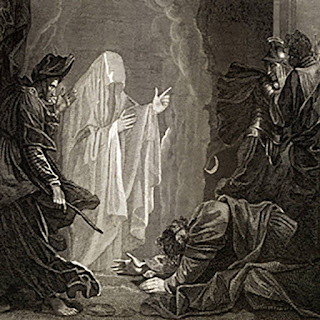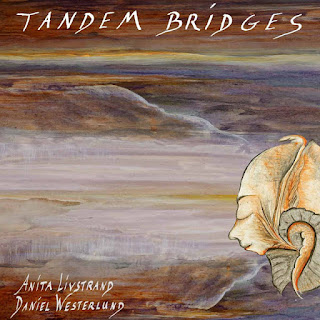E GONE interview with Daniel Westerlund
©Thorbjörn Skoglund 2017
Daniel Westerlund is a master of fusing different styles of music. The result is absolutely incredible release of his E GONE. Read our interview below.
Let’s start the interview with a quote from your website: “There are two kinds of philosophy; the first examines the world from the viewpoint of the traveler, the second from a resting point in a certain locality. E GONE belongs to the latter.” What is the concept behind E GONE?
The original intent was that of self discovery via music. A philosophy that examines the world “from a resting point in a certain locality” – that’s just a fancy way of saying “bloom where you are planted.” Without getting too personal I can say that for me the E GONE belongs to the latter”- part is an imperative call to myself. It is along the lines of “look around you, what do you see?”- type of self-questioning.
Sunrise Ocean Bender sent me a lovely package of their releases and among them there was your All The Suns of the Earth album. I was pleasantly surprised how unique sounding it is in today’s massive flood of releases. Usually diversity of styles don’t work well for me but your album is a rare exception. You managed to sort different influences in an amazing entity. What was the process of recording and producing your debut?
The debut record consists of songs that were written in the last stages of The Goner’s lifespan plus new songs that I wrote especially for the record. In the beginning I wanted All the Suns of the Earth to have a straight-up folky sound from beginning to end, but restless as I am I couldn’t stick to one concept. That’s the first and foremost explanation as to why the record is so diverse. I have a hard time working with just one type of expression. After a while I came to accept that the record started to sound like a mixcloud compilation of a bunch of artists working in different fields, but as you say – the songs seemed to connect somehow.
What was the writing and arranging process?
Writing, arranging, recording and producing is intermingled in the way I work. A song might start with a chord progression on guitar, and yet another starts with a single drum sound. It’s almost never the case that I finish a song “outside” of the DAW and then set out to record it. It’s always a back-and-forth: recording parts, flipping them around in the computer environment, trying other parts on an instrument, and then back to recording, adding stuff along the way.
You’re better known for being a member of The Goner. What’s the story behind formation of The Goner?
The Goner started as my solo project. It was a shot in the dark really. Up until that point I hadn’t written or played music with any consistency. 2008 was a depressing year for me (nothing exceptional, just the clichéed bad break up story). The music on the first three The Goner cd-r’s releases (Halartrallar, Hind Hand and Haven) was me working through a general sense of meaninglessness by trying to create meaning real fast. I decided on writing a trilogy before I even had any music. I just wanted to cling to something scheduled, you see. After those cd-r’s were released The Goner soon developed into a band. I invited friends to play, and then reached out to other musicians as well. It was a always a changing set of members.
Deep Water Acres is a well respected label for quality releases and they released Behold A New Traveler and reissued your HH album, which consists of two previously issued EP’s Haven and Hind Hand, both from 2008. How does it compare to your solo work? Is there a major difference between working completely on your own compared to being in a band?
Well, Haven and Hind Hand are essentially solo records, with a few guest musicians. With Behold A New Traveler I still wrote and played the majority of the songs by myself. But by that point The Goner had several steady members.
The major difference between being a solo artist and being in a band is probably what you’d expect. It’s a question of consideration. If you’re in a band and if you are like me you worry that the other members might not be enjoying themselves, and – since they’re taking the time from their busy lives to play in what is essentially a back-up band for my songs – you try to please every member’s particular taste in music by writing a set of very different sounding songs. This proved to be difficult, especially if your own mind is already occupied in itself by a choir of different tastes and needs, and I think in a way this preoccupation of mine to please everyone in the band is what broke the band. I got lost.
If you want a band like this to function well you probably need managerial skills, which I lack. For better or worse, you should be able to act like a benevolent dictator. But it’s quite different of course if you’re a bunch of friends starting a band together, then you’d probably need another type of social skills altogether, which I also lack…
With E GONE I just have to please every twisted member of this community of misfits called “my self”.
Is The Goner still an ongoing project?
No, it disbanded in 2012.
There are three more releases I want to discuss before moving forward to E GONE. Fyrskeppet Sydostbrotten (Awkward Formats, 2015), Hanna Riisager & Daniel Westerlund För Kvalia (ljud) (Dockhaveri, 2015), Anita Livstrand & Daniel Westerlund Tandem Bridges (Quica Records, 2013). What can you tell us about this collaborations?
Fyrskeppet is a drone/ambient project of mine. The sound is more ethereal and “watery” compared to E GONE, which has more to do with earth and fire, in my mind. Fyrskeppet is Swedish for “the lightship”, and light houses and lightships are endlessly fascinating to me. The record Sydostbrotten is steeped in nautical lore and arctic emotions.
För Kvalia is the title of a book written by my girlfriend Hanna Riisager. When she was about to release the book we came upon the idea to collaborate; so I provided a soundtrack to go along with recordings of her readings from the book. Since I am a fan of spoken word records I’ve always wanted to do something like this, and here I got the chance to explore a different mind-set in writing music.
Tandem Bridges is the result of my collaboration with one of my biggest sources of inspiration from the Swedish music scene: Anita Livstrand. Her debut solo record Mötet (1978) is one of my favourite releases of all time and it was a complete honour to work with her. We recorded Tandem Bridges in her apartment and in my then rehearsal space. I had very limited resources as a producer (both knowledge – and equipment-wise) at the time, and it was a wonder she trusted me throughout the whole process. But I like to think I learned on the job. The recordings were then mixed by Pawel Lucki, a well established sound engineer on the Stockholm jazz scene, who had to clean up the mess I’d made.
After your debut, you released Smokediver EP which is packed with Eastern atmosphere. Soon after that you first released a cassette version of Advice To Hill Walkers (Zeon Light Records). It’s even more ambitious, extending into wider concept. It was later also released on CD format (Deep Water Acres/Sunrise Ocean Bender). What influenced your songwriting on Advice To Hill Walkers?
A lot of by Sublime Frequencies – compilations. That means music from north Africa, Central Asia and even further east. And I drew inspiration from that massive release Let No One Judge You – early recordings from Iran plus some Syrian traditional music. I felt with Advice To Hill Walkers that I wanted a live and organic feel, at least as much as I was able to achieve – E GONE is a solo project after all, and I have to record one instrument at a time.
As presented in your music making, you must have been listening to wide variety of different music. Would you like to get into details regarding your influences?
An example of an early influence was Six Organs of Admittances Dark Noontide record. I – among many, I’m sure – discovered Organs and similar artists via David Keenan’s article in The Wire on “The New Weird America” back in 2003. That generation of homebrewed do-it-yourself psychedelia really spoke to me. Other – to my mind – strong influences would be singer-songwriter Simon Joyners lo-fi albums, 16 Horsepower, Master Musicians of Bukkake, Psychic TV, but also early nineties records by Beck and Nine Inch Nails… You probably can’t escape what records that you worshipped in your formative years have done to you in terms of influence.
But it is true, I listen to a variety of music, genres aren’t as important as a strong and vital musical vision. I must confess I rarely listen to psychedelic music nowadays though, I’m more likely to listen to the electronic decay of Actress or hard hitters by Detroit hip hop eccentric Danny Brown. Dub music, both vintage and contemporary, is also a source of inspiration.
What’s the future plan for E Gone?
I have a few releases planned for 2017. I hesitate to say more than that, afraid I might jinx it.
Thank you for your time. Last word is yours.
Thank you. If the reader wishes to stay tuned, there is:
– Klemen Breznikar
© Copyright http://www.psychedelicbabymag.com/2017
Array








